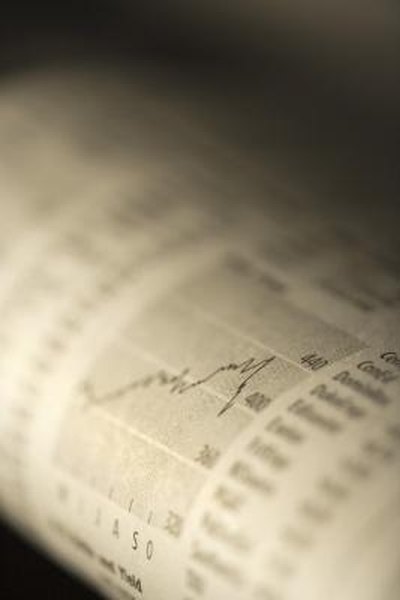Relationship Between P/E Ratio & Stock Price
Compare P/E ratios of stocks in the same sector to determine reasonable valuations.
Thinkstock/Comstock/Getty Images
While a company's stock price reflects the value that investors are placing on that investment, the price-to-earnings ratio, called P/E ratio, illustrates a stock's worth based on current or future profits. A stock that is fairly valued should have a P/E ratio that justifies its price. However, most stocks are either undervalued or overvalued based on earnings. This creates opportunities for investors to buy shares at a bargain or to sell holdings at a premium.
Overview
A P/E ratio cannot be determined without first knowing a company's stock price. A company's market value, or stock price, is used to calculate the P/E ratio. The equation involves dividing the current market value by a company's average earnings per share over the trailing four quarters, or simply using the full-year earnings per share. A P/E ratio based on projected future earnings performance can also be attained. The average P/E ratio for the stock market's largest companies is 15. Stocks that are valued below that level might be undervalued, and those valued above it could be overvalued.
Undervalued
The P/E ratio can illustrate whether a stock price is undervalued in light of a company's financial strength. Although there is no assurance that the stock price will eventually attain a more attractive valuation, investors can buy undervalued shares at a seemingly discounted price and expect to be rewarded over time. Undervalued stocks tend to begin better reflecting their P/E ratios under certain economic conditions, such as a period of rising inflation when the value of assets on a company's balance sheet is also increasing, according to a 2012 article in "The Wall Street Journal."
Highly Valued
A company's PE ratio can illustrate when its stock price is deemed high in light of earnings performance. Investors can use an overvalued stock as an opportunity to take profits by selling shares at the high price. Other investors might be willing to pay a lofty price for the highly valued shares of quality companies, in anticipation of persistent earnings growth. The stock price is much more likely to reflect the high valuation, or P/E ratio, if the company has increasing revenues, or sales, to support its earnings growth, according to a 2012 article in "The Wall Street Journal."
Uncertainty
Economic and market uncertainty can weaken the relationship between a company's P/E ratio and its stock price, according to "The Wall Street Journal" in 2010. For instance, when there are inconsistent projections for a company's forthcoming profit performance among the financial analyst community and corporate executives, it blurs investors' expectations and can cause the P/E ratio to decline. The disparity between a P/E ratio and stock price widens when investors are grappling with heightened global economic uncertainty, the article suggests.
References
Resources
Writer Bio
Geri Terzo is a business writer with more than 15 years of experience on Wall Street. Throughout her career, she has contributed to the two major cable business networks in segment production and chief-booking capacities and has reported for several major trade publications including "IDD Magazine," "Infrastructure Investor" and MandateWire of the "Financial Times." She works as a journalist who has contributed to The Motley Fool and InvestorPlace. Terzo is a graduate of Campbell University, where she earned a Bachelor of Arts in mass communication.

